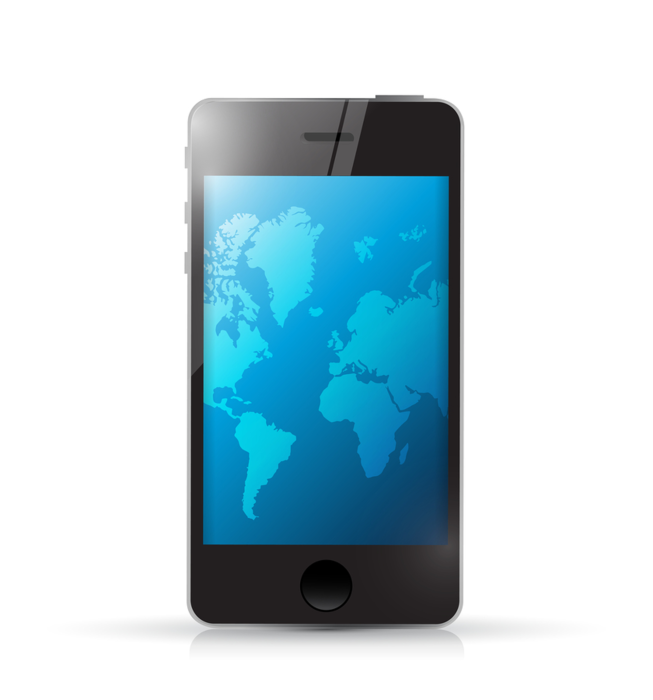The number of smartphones users will total roughly 1.75 billion globally in 2014, according to estimates by eMarketer. By 2017 that number’s likely to reach more than five billion.
Social engagement dominated the World Cup this year, partly because everyone lives with their phones in their back pockets. As the games–and cultural phenomena around the games–unfolded, fans shared the various moments on their smartphones in unprecedented fashion. The Super Bowl ain’t got nothing on the World Cup.
But not all smartphone usage is social. In fact, only about 30% of people said they planned to use their mobile devices during the World Cup for social-related activity. According to The Wall Street Journal and Statista, 58% said they’ll be using their phones to check information like scores and news; 46% said they’d be engaging with content, like watching live-stream games; and 37% said they’d be using their phones for transactional activities like phone-based ticketing, gambling, and downloading paid apps.
But no matter how you slice it, one thing is clear: Fans love their phones. The World Cup may be almost over, but these experts all agree: The second screen wins every time—but you need a strategy to match.
“The World Cup is a cluttered arena for advertisers, from major sponsors down to the little guy, everyone wants in on the action, so whatever you do, start with strategy,” says Howard Hunt, executive director of client service at MXM Mobile. “Identify what content you’re going to share with the world and then use savvy mobile activation to enable your story.”
Scoring with contextual messages
The World Cup is an event that “transcends sports,” says Jeremy Sigel, client director of mobile at digital agency Essence. For that reason, brands should consider what fans are doing at all times—for example, watching television at odd hours, visiting bars during certain key games, etc.—and make the most of those opportunities with contextual messages that enhance the user experience.
“Utilize dayparting [delivering marketing messages during precise time slots] and capitalize on second-screen use,” Sigel says. “Know the World Cup schedule by time zone. With nearly half of all Americans using mobile devices while watching television, align creative messaging on both social and paid media channels with the current match to make your brand relevant and additive to the consumer.”
No need to reinvent the wheel
Coke is an exemplar of this. The brand currently is using the QuizUp to serve World Cup trivia to the app’s more than 20 million registered users. And at the 2010 World Cup in South Africa, Coke called on agency MXM to create a global Web experience that invited millions of fans to share and vote on mobile videos of their most ecstatic goal celebration moments throughout the games. The winner snagged a ticked to the final match.
Although Coke certainly has the cash to create its own app, it tapped into QuizUp and YouTube—places where fans were already engaging—rather than creating something totally new.
“For any major event, there will already be some really useful apps, so unless you have the budget to create something truly unique—don’t waste your time,” Hunt says. “Plan for your search, social, and standard mobile activation channels to drive traffic consistently, and if you already have a robust mobile applications, then simply integrate your Web experience there and activate through push notifications.”
Tech is cool, but don’t forget about the user
Brands certainly should take advantage of mobile technology, but also should “focus on your customers first,” says
James Smith, VP of North American marketing at Sitecore. “Work with your developers and content teams to find out what existing content can be made more valuable to users. Even if you don’t have time to build a mobile site, you can still produce content that will perform well on mobile, like optimized videos that tend to drive engagement better than written content or images.
Another reason to consider the customers experience: For many people around the world, soccer is like a religion, and brands need to be deferential when it comes to promotion. Think about the emotional state of your potential customers as they nail-bitingly watch the games. In this regard, Dr. P.K. Kannan, professor of marketing science at the University of Maryland’s Robert H. Smith School of Business, calls mobile a “double-edged sword.”
Let’s say a fan is served an ad while checking on the scores. It might seem innocuous at most times, but—depending on the tone and content of the messaging—the ad could certainly feel like salt in the wound if that fan’s team is on the rocks or has just been eliminated.
“Such intrusions can be bad and the negativity of the situation might rub off on the marketer tying to pitch their offering,” Kannan says. “Have built-in rules that say things like, ‘Run this mobile ad if the U.S. is ahead or winning, [but] don’t run it when they have lost a game.’ Sensitive marketing is key in such situations.”








